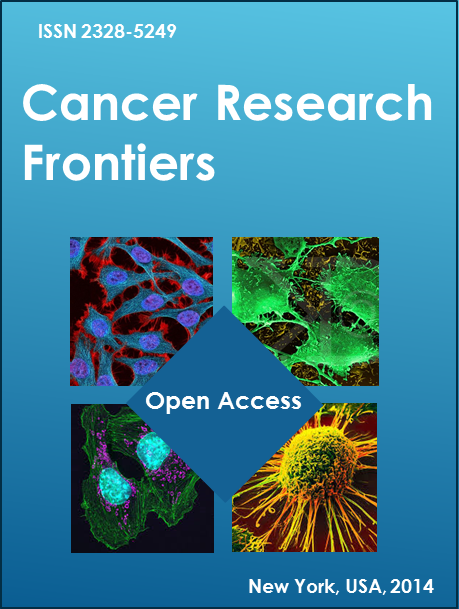Abstract _ Full Text (HTML) _ Full Text (PDF)
Research Article
Cancer Research Frontiers. 2017; 3(1): 204-214. doi: 10.17980/2017.204
Patterns of Care and Outcomes in Early Stage Neuroendocrine Carcinoma of the Uterine Cervix
Alison K. Yoder1, Shraddha M. Dalwadi2, Clark M. Dorman3, Tracilyn R. Hall4,5, Matthew L. Anderson4,5, Michelle S. Ludwig 2,5*
1Baylor College of Medicine, Houston, TX, USA
2Department of Radiation Oncology, Baylor College of Medicine
3University of Texas Health Science Center at Houston McGovern Medical School, Houston, TX, USA
4Department of Obstetrics & Gynecology, Baylor College of Medicine
5Dan L. Duncan Comprehensive Cancer Center, Baylor College of Medicine
*Corresponding author: Michelle S. Ludwig, MD, MPH, PhD. Department of Radiation Oncology, One Baylor Plaza, MS BCM711, Houston, Texas 77030. (p); (f). Email:
Citation: Alison Yoder, et al. Patterns of Care and Outcomes in Early Stage Neuroendocrine Carcinoma of the Uterine Cervix. Cancer Research Frontiers. 2017; 3(1): 204-214. doi: 10.17980/2017.204
Copyright: @ 2017 Alison Yoder, et al. This is an open-access article distributed under the terms of the Creative Commons Attribution License, which permits unrestricted use, distribution, and reproduction in any medium, provided the original author and source are credited.
Competing Interests: The authors declare no competing financial interests.
Received June 19, 2018; Revised Aug 18, 2018; Accepted Aug 27, 2018. Published Sept 7, 2018
Abstract:
Objective: Neuroendocrine carcinoma (NEC) is a rare form of cervical cancer associated with poor outcomes. We aimed to examine whether the addition of chemotherapy or radiation to hysterectomy for treatment of early stage NEC improved patient survival.
Methods/Materials: All women in the National Cancer Database diagnosed with early stage (FIGO I-IIA) NEC were identified. Coded patient demographics, tumor characteristics, and data regarding treatment were abstracted. Cox univariate and multivariate survival analyses were performed using SPSS Version 24.0.
Results: A total of 104 subjects with stage I-IIA NEC whose treatment included hysterectomy were identified. Mean age of these subjects was 41 + 14.1 years and median follow-up length was 47 months. Nearly half of subjects (n=50, 48.1%) were treated with a combination of hysterectomy, radiation, and chemotherapy, while fewer women underwent hysterectomy and chemotherapy (n=33, 31.7%), hysterectomy alone (n=20, 19.2%) or hysterectomy followed by radiation (n=1, 1.0%). In univariate analysis lower stage, Caucasian or Hispanic race/ethnicity, lack of lymph metastases, and negative surgical margins were associated with improved overall survival (p<0.05). Tumor stage, lymph node involvement, and race remained significantly associated with OS (p<0.05) in multivariate analysis. Use of radiotherapy or chemotherapy was not associated with improved OS (p>0.05). Furthermore, neither the timing of chemotherapy nor type of chemotherapy used resulted in improved OS (p>0.05).
Conclusions: This analysis indicates that OS for women undergoing hysterectomy for early stage NEC is not improved by chemotherapy or radiation. Effective options for adjuvant therapy are urgently needed to improve outcomes.
Key Words: Neuroendocrine cervical carcinoma, radiation therapy, chemotherapy, adjuvant, neoadjuvant, survival








